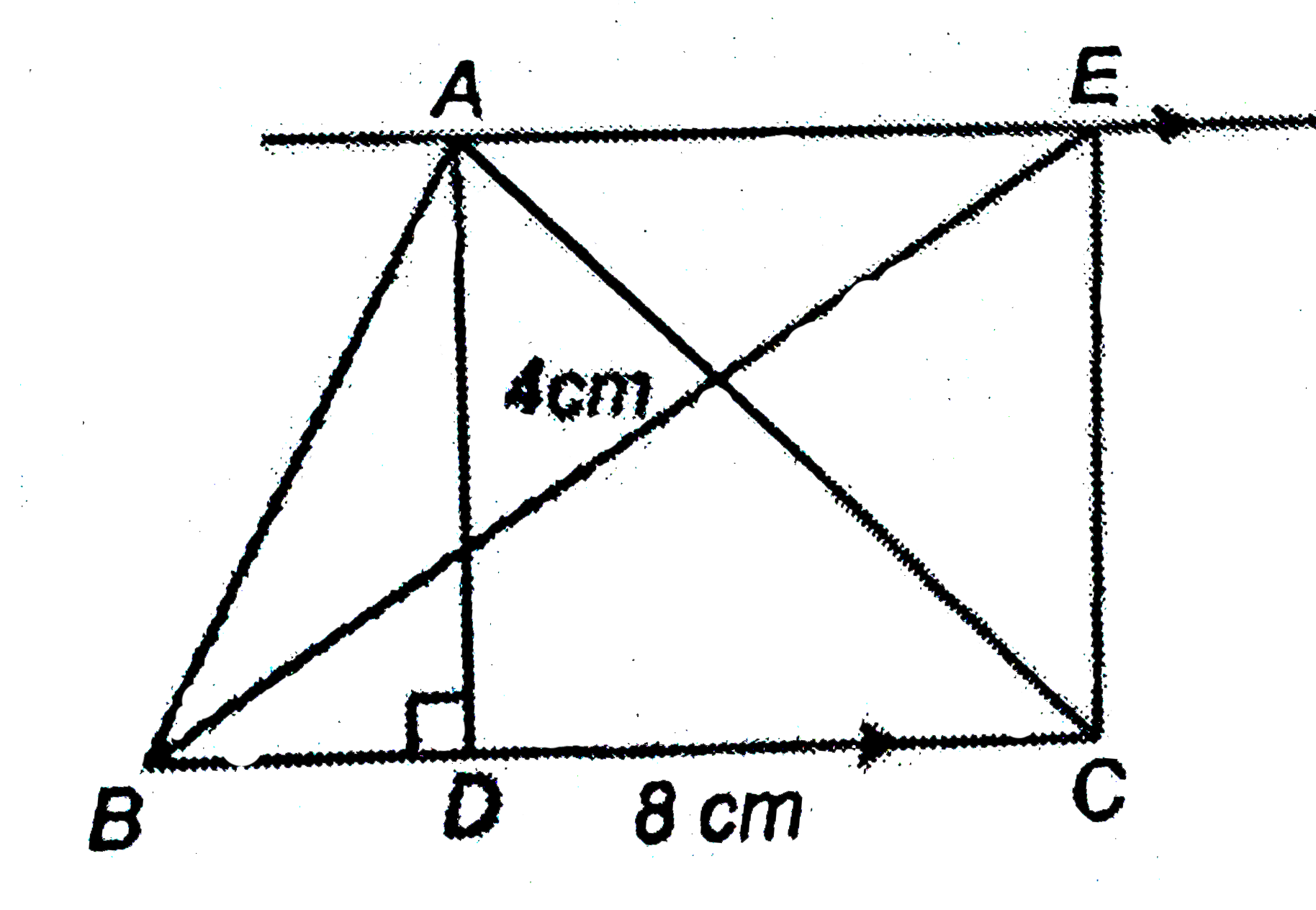ABCD is a rectangle measuring 60 cm by 50 cm P,Q,and R are the points on AB, AD , and BC, respectively, such that AP=40cm,AQ=20cm,andBR=40cm. Find the area of the polygon QPBCD.
The correct Answer is:2600sq.cm
To find the area of the polygon QPBCD, we will follow these steps:
Step 1: Calculate the area of rectangle ABCD
The area of a rectangle is given by the formula:
Area=Length×Breadth
For rectangle ABCD:
- Length = 60 cm
- Breadth = 50 cm
So, the area of rectangle ABCD is:
AreaABCD=60cm×50cm=3000cm2
Step 2: Identify the dimensions of triangle PAQ
In triangle PAQ:
- AP = 40 cm (base)
- AQ = 20 cm (height)
Step 3: Calculate the area of triangle PAQ
The area of a triangle is given by the formula:
Area=12×Base×Height
For triangle PAQ:
AreaPAQ=12×AP×AQ=12×40cm×20cm
Calculating this gives:
AreaPAQ=12×800cm2=400cm2
Step 4: Calculate the area of polygon QPBCD
To find the area of polygon QPBCD, we subtract the area of triangle PAQ from the area of rectangle ABCD:
AreaQPBCD=AreaABCD−AreaPAQ
Substituting the values we calculated:
AreaQPBCD=3000cm2−400cm2=2600cm2
Final Answer
The area of polygon QPBCD is:
AreaQPBCD=2600cm2
---
The area of a rectangle is given by the formula:
Area=Length×Breadth
- Length = 60 cm
- Breadth = 50 cm
AreaABCD=60cm×50cm=3000cm2
In triangle PAQ:
- AP = 40 cm (base)
- AQ = 20 cm (height)
The area of a triangle is given by the formula:
Area=12×Base×Height
AreaPAQ=12×AP×AQ=12×40cm×20cm
AreaPAQ=12×800cm2=400cm2
To find the area of polygon QPBCD, we subtract the area of triangle PAQ from the area of rectangle ABCD:
AreaQPBCD=AreaABCD−AreaPAQ
AreaQPBCD=3000cm2−400cm2=2600cm2
The area of polygon QPBCD is:
AreaQPBCD=2600cm2
Topper's Solved these Questions
- BOOK - ICSECHAPTER - PERIMETER AND AREA EXERCISE - REVISION EXERCISE24videos
PERIMETER AND AREA
- BOOK - ICSECHAPTER - PERIMETER AND AREA EXERCISE - UNIT PRACTICE PAPER V10videos
PERIMETER AND AREA
- BOOK - ICSECHAPTER - PERIMETER AND AREA EXERCISE - EXERCISE 17.233videos
PERIMETER AND AREA
- BOOK - ICSECHAPTER - PERCENTAGE, PROFIT AND LOSSEXERCISE - REVISION EXERCISE26videos
PERCENTAGE, PROFIT AND LOSS
- BOOK - ICSECHAPTER - PROBABILITYEXERCISE - TRY THIS14videos
PROBABILITY
Similar Questions
ABCD is a trapezium in which AB||DC and P,Q are points on AD and BC respectively, such that PQ||DC, if PD=18 cm, BQ=35 cm and QC=15 cm. Find AD.
View SolutionIf P and Q are points on the sides AB and AC respeactively of △ABC, if PQ||BC,l AP= 2 cm , AB = 6 cm and AC= 9 cm find AQ.
View SolutionIn the given figure, ABCD is a trapezium with angle C=120∘,DC=28 cm and BC=40 cm. Find :

(iii) the area of the trapezium.View SolutionIn the given figure, BC=8cmandAD=4cm.AD∣∣BC, find the area of ΔEBC
 View Solution
View SolutionIn parallelogram ABCD, AB = 16 cm, BC = 12 cm and diagonal AC = 20 cm. Find the area of the parallelogram.
 View Solution
View SolutionP and Q are points on the sides AB and AC respectively of a △ABC. If AP= 2cm, PB = 4cm AQ= 3cm and QC= 6cm. Show that BC= 3PQ.
View SolutionAP, AQ and BC are tangents to the circle. If AB = 5 cm, AC = 6 cm and BC = 4 cm, then the length of AP (in cm) is
View SolutionAP, AQ and BC are tangents to the circle. If AB = 5 cm, AC = 6 cm and BC = 4 cm, then the length of AP (in cm) is
View SolutionIn ΔABC,D and E are the points on sides AB and AC respectively.
Find whether DE || BC, if :
AB = 9 cm, AD = 4 cm, AE = 6 cm and EC = 7.5 cm.View SolutionIn the given figure, ABCD is a trapezium with angle C=120∘,DC=28 cm and BC=40 cm. Find :

(ii) ADView Solution

